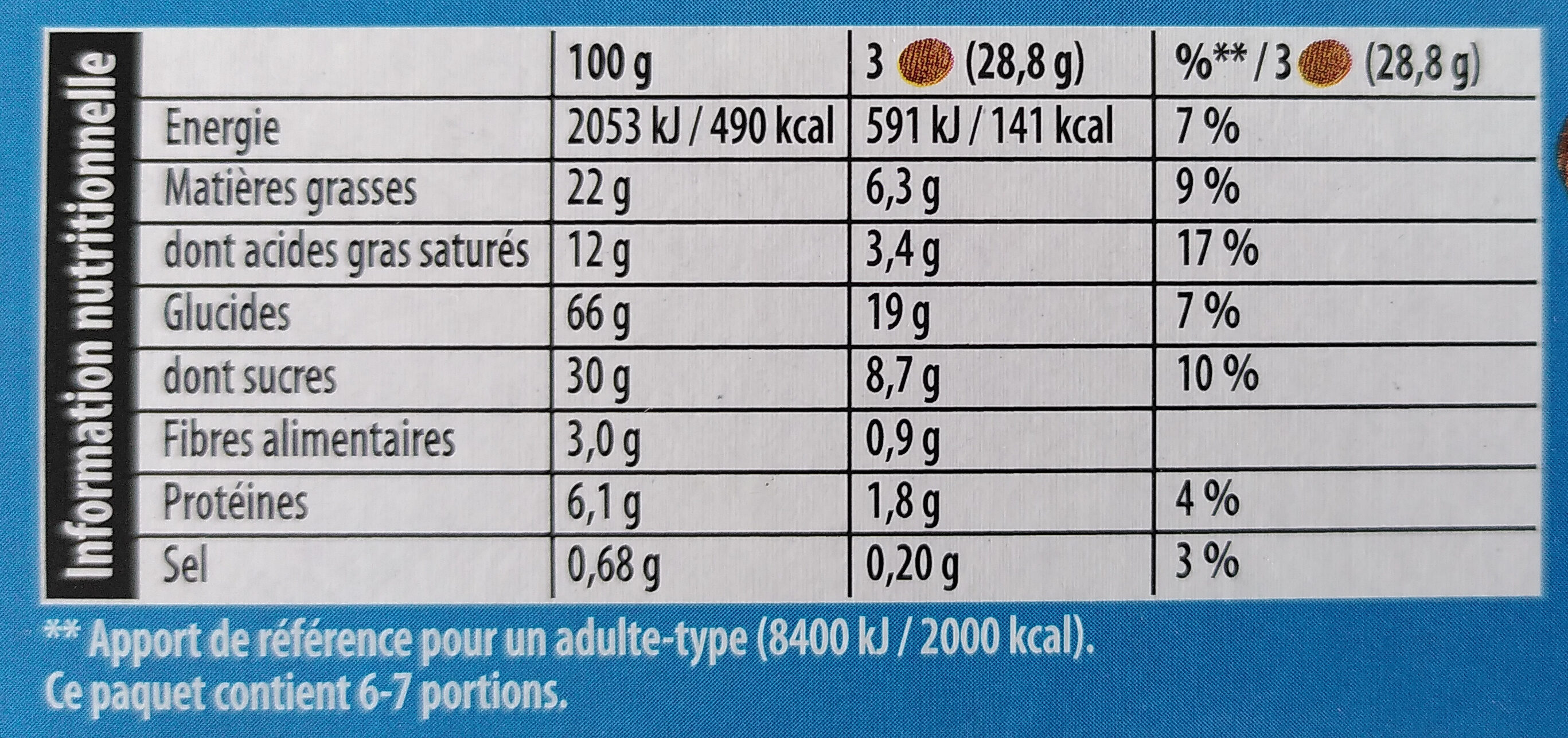Chargement… - Lu - 192 g
This product page is not complete. You can help to complete it by editing it and adding more data from the photos we have, or by taking more photos using the app for Android or iPhone/iPad. Thank you!
×
Barcode: 7622210717801 (EAN / EAN-13)
Common name: Biscuits nappés au chocolat au lait
Quantity: 192 g
Packaging: fr:Sachet plastique, fr:Étui carton
Categories: Snacks, Sweet snacks, Biscuits and cakes, Biscuits, Chocolate biscuits, Milk chocolate biscuits
Labels, certifications, awards:
Distributor labels, Charte LU Harmony, Triman
Manufacturing or processing places: France, Cestas
Link to the product page on the official site of the producer: https://www.lu.fr/pepito/produit/pepito-...
Stores: Intermarché, carrefour.fr, Carrefour
Countries where sold: France, Switzerland
Matching with your preferences
Report a problem
Data sources
Product added on by kiliweb
Last edit of product page on by .
Product page also edited by autorotate-bot, date-limite-app, driveoff, foodless, freezer, madame, mairoluin, mathias83dxb, off.b588fcc2-adf1-4abf-b5bd-20cf3f5e28c4, openfoodfacts-contributors, packbot, quechoisir, roboto-app, yuka.R1pFUlM3c3pwOElhbk1RdnpCZlEvTmx5eGJhRmZtbVpKYk05SUE9PQ, yuka.RnZwZVRiZ3VxOXRRZ3MwbXBEcUl3ZU5aNXBxa1hVNlpNL29TSWc9PQ, yuka.RzY4QUQ3d2xuK3RVZ01NMTh3emY2SUpPbVlLZ2IwMlRkdkU3SVE9PQ, yuka.UmZndVBmUThpZXNudWRnWDhnbjVxOTRyKzVyd1lXS0xNT3cwSVE9PQ, yuka.Vkpzd1Nmbytsc0FvaGNKaXBBck8xOHhyM3NTdFEwbXZGTUZJSUE9PQ, yuka.WC93RUZvRVFqTlV6di9adjdFbnA1OTlPMmFHTFJFNnBkT28vSUE9PQ, yuka.WEpzd1RLQVkrZGNocXNNYjJCVDg0dnQ2MXJ1R1RVU1ZPZm9NSVE9PQ, yuka.YUpBYkliNWFvdWM0aE5zUzFUSFc1NHhhdzVhRmNUTHRDTTlQSUE9PQ, yuka.Yi9FQVRmeGNxT0EwdmNjUzBnL0pvL0JZM1pXUUExK1RHK1V3SVE9PQ, yuka.sY2b0xO6T85zoF3NwEKvlmp3VN3DuRD7ax3hvWCO1_CJEJ7Hb81pwLjZFKs.












